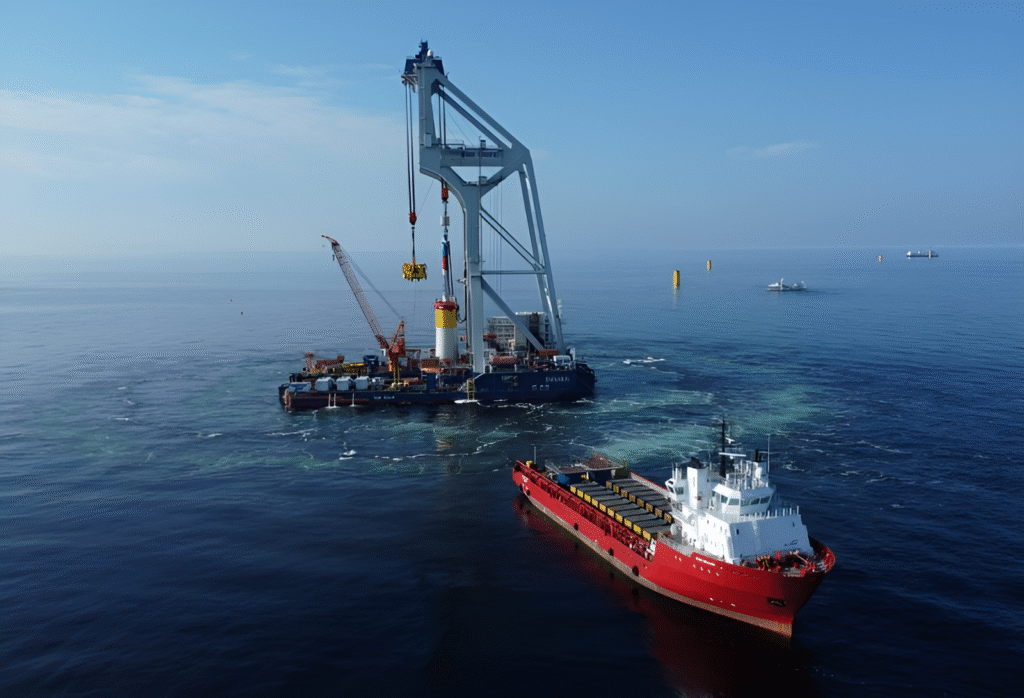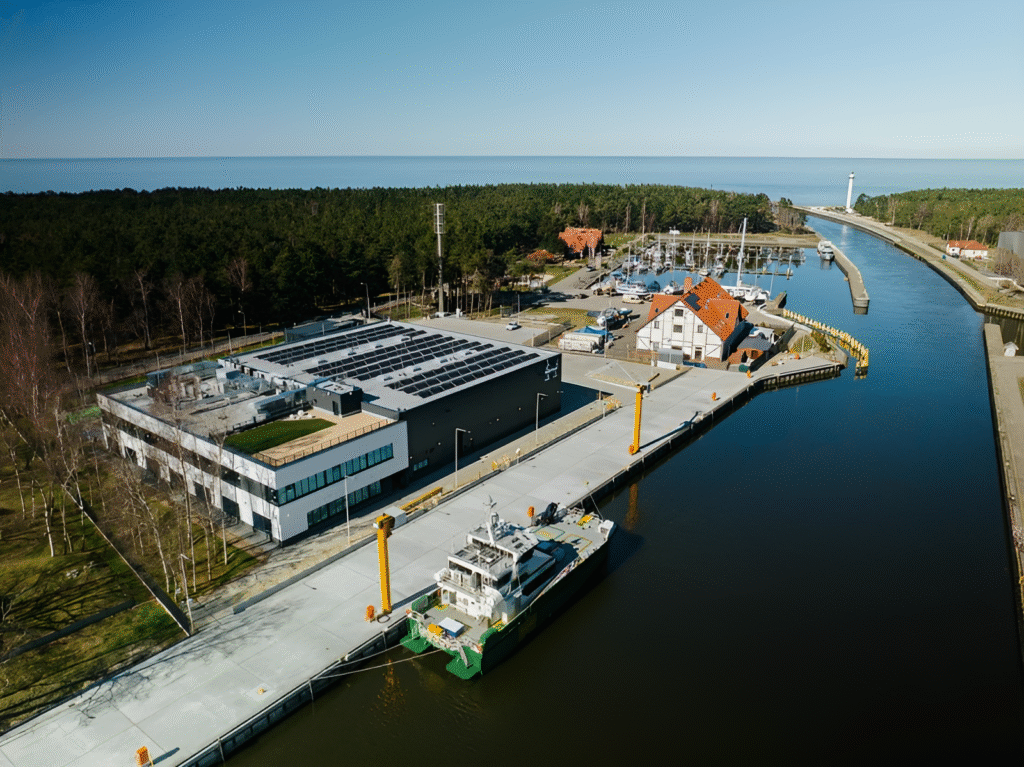Świnoujście Becomes the a pivotal Hub of offshore Wind Energy in Poland
Świnoujście, Poland – In a groundbreaking step for Poland’s renewable energy ambitions with the launch of Świnoujście‘s First Offshore wind installation terminal led by ORLEN Neptun, a subsidiary of the ORLEN Group, in the Baltic region.
With the long-term lease signed with Ocean Winds, this state-of-the-art facility is the first of its kind in the country and is set to become a commercial and technologically advanced facility for external developers operating in the Baltic Sea, including the waters of Germany, Sweden and Denmark.
This could be a first for the entire region and for the nation and a game-changer for the entire European region, capable of supporting next-generation turbines and international cooperation, making Świnoujście a key hub for the green energy transition across Europe.
Poland Launches Baltic’s Largest Offshore Wind Terminal Led By ORLEN- Powering Europe’s clean energy future
Table of Contents
Poland Strategic agreement with Ocean Winds
ORLEN Group has signed a long-term lease agreement with Ocean Winds, a Spanish-French offshore wind consortium recognized as a global leader in wind power development, as part of the terminal’s operation. The partnership will emphasize the central European country’s strategic role in shaping the future of advanced offshore energy in Europe.
According to the agreement, Ocean Winds will use almost the entire facility to support the construction of the BC-Wind offshore wind farm, located approximately 228 kilometers from Świnoujście.
Ocean Winds Poland Managing Director Kacper Kostrzewa highlighted the importance of this facility, saying:
“We are delighted to have chosen the port of Świnoujście as a key hub for the BC-Wind offshore farm, which fully meets both our technical requirements and the project timeline.”
Advanced infrastructure built in Europe for the future of offshore wind
The ambitious proposed terminal is specifically designed to handle advances in offshore wind technology, capable of supporting the installation of next-generation wind turbines, each with a capacity of around 15 MW. The proposed key infrastructure includes:

Facilities for unloading, stacking and loading large turbine components
Monopiles, towers, blades, nacelle and storage
Capacity to receive substation topsides of up to 24,000 tonnes
Jack-up and docking of heavy-lift vessels
The terminal is designed to be operated by dozens of workers and will enable efficient supply and assembly for the installation of large-scale wind farms across the Baltic Sea region.
Why Świnoujście? Prime location for offshore wind expansion

Firstly, one of the reasons why Świnoujście was chosen is its inland coastal location, which offers excellent connections by rail, road, ferry and air, as well as excellent weather conditions, ensuring year-round operations. A third reason is that the location was specifically chosen for its logistical advantages and its potential to become a Baltic offshore farm logistics powerhouse.
Irenuj Fafara, CEO and Chairman of the Management Board of ORLEN, highlighted:
“We are laying the foundations for a completely new, future-ready sector of the economy. Świnoujście will be our base for the implementation of offshore farm projects with almost 50% Polish capital participation.”
Economic impact: Increased industry and job creation
In addition to the environmental benefits, the terminal will act as a major economic catalyst for the region. By employing local contractors and professionals with international experience, the project will create new jobs, create many green jobs, develop the supply chain and, needless to say, encourage industrial innovation in the renewable energy sector in Europe.
Cargo handling, storage and port services will be carried out by regional businesses, which will strengthen Poland’s ambitions to become a competitive player in the European offshore wind market.
What is the ORLEN2035 strategy: Offshore wind as a key renewable pillar

The opening of the Świnoujście terminal is fully consistent with the broader ORLEN2035 strategy, which sets ambitious goals for Poland’s green transformation. ORLEN has set a target of installing 12.8 GW of renewable energy capacity by 2035, of which 6.4 GW will come from offshore wind farms.
This facility will certainly play a key role in realizing that vision, enabling ORLEN and its partners to implement projects at scale and speed.
🇵🇱 Offshore Wind Energy in Central Europe: Electricity for a Greener Tomorrow
Now, let’s take a brief look at Poland’s offshore wind energy. The 9km-diameter wind farm will be situated off the Polish Baltic Sea coast, bolstering country’s newly found position as a European power house in the area and fast-tracking the country’s transition to clean energy. It’s national goals are too ambitious, with the potential to install as much as 11 GW of offshore wind capacity by 2040, making it the regional center for renewable energy in Central and Eastern Europe, supported by the Polish government and leading investors. These investments do not only contribute to the EU’s climate ambitions, but also strengthen it’s energy sovereignty, deliver thousands of green jobs, and drive industrial innovation.
The construction of the offshore wind farms being delivered with the help of specialized infrastructure such as the new Świnoujście terminal signals a new phase in the country’s energy transition — one that turns away from coal and toward a low-carbon, future-proof economy.
About ORLEN
ORLEN is one of the leading integrated energy concerns in Central Europe, advancing the region’s transition to sustainable energy systems. The state-owned firm is pouring money into offshore wind, solar, small modular reactors (SMRs) and energy storage in a strategy to grow installed renewable capacity to 12.8 GW by 2035. Baltic Power – ORLEN’s flagship offshore wind project, with Northland Power – is the most advanced wind farm project in Poland and the first to have reached FID.
Beyond renewables, ORLEN is upgrading Poland’s energy system, exiting coal, and creating a robust, mixed portfolio of energy, that will help to drive economic growth, meet climate goals, and secure energy supplies long into the future in the region.
Conclusion: The country becomes the epicenter of European offshore wind
Above all, with the inauguration of the largest offshore wind terminal in the ocean region, Poland has firmly established itself in the field of offshore wind energy in Europe. The consortium between ORLEN Neptune and Ocean Winds will undoubtedly serve as a strong example of the public-private partnership needed to achieve climate goals and ensure energy independence.
As the world moves undouble towards clean energy sources, Świnoujście has become a symbol of innovation, sustainability and regional development in offshore wind.





